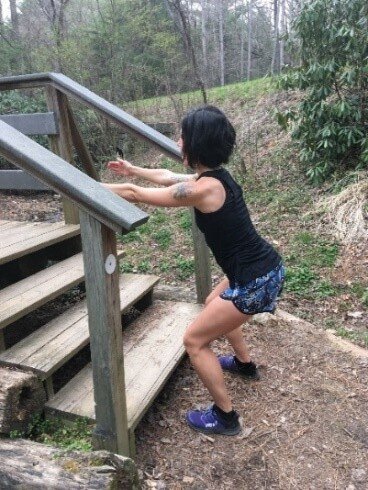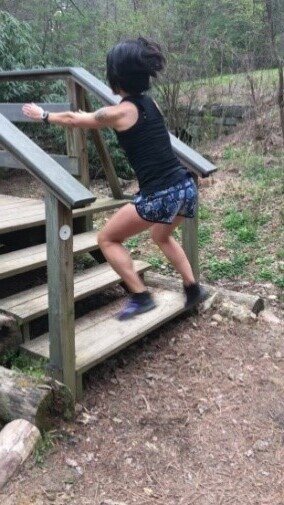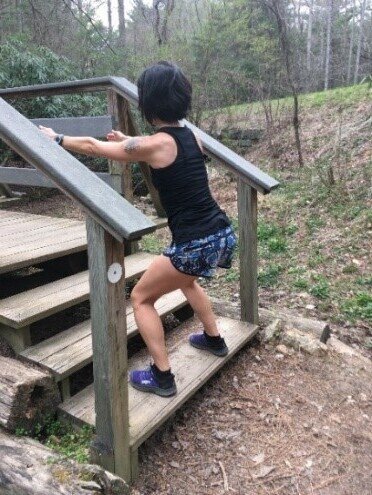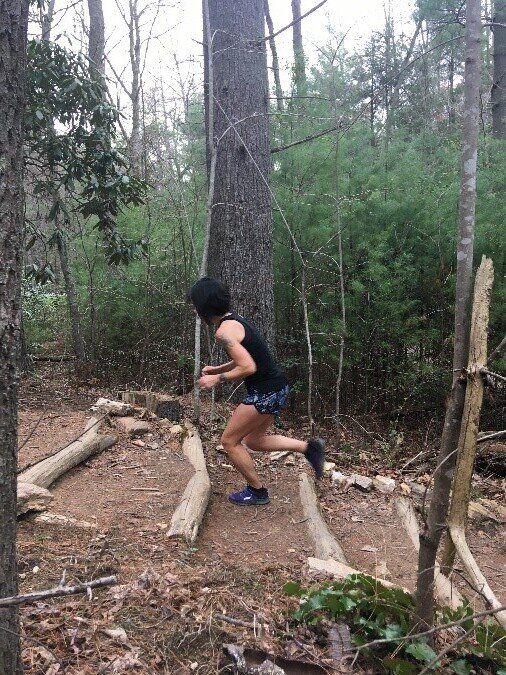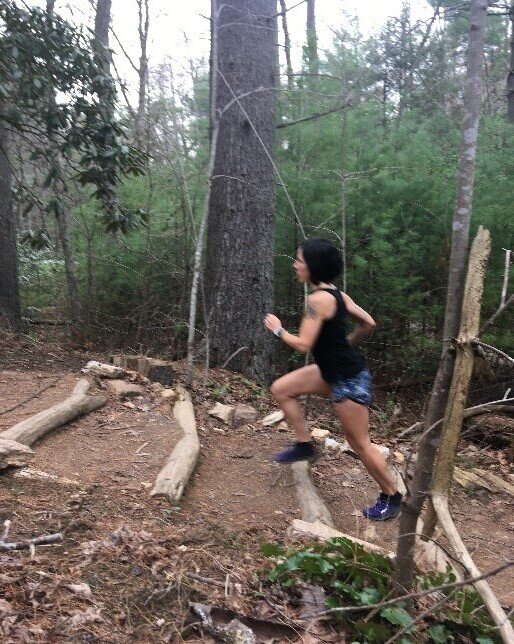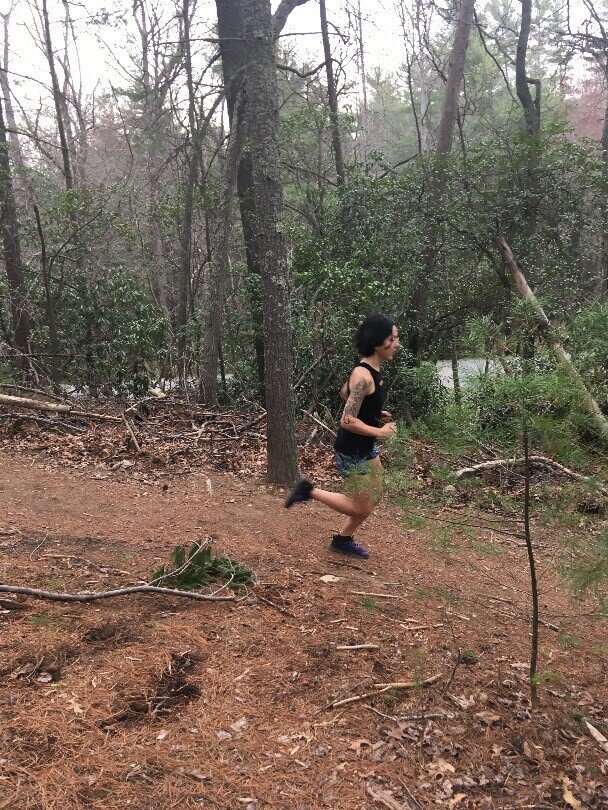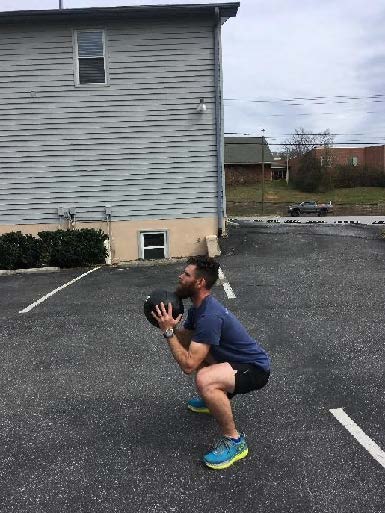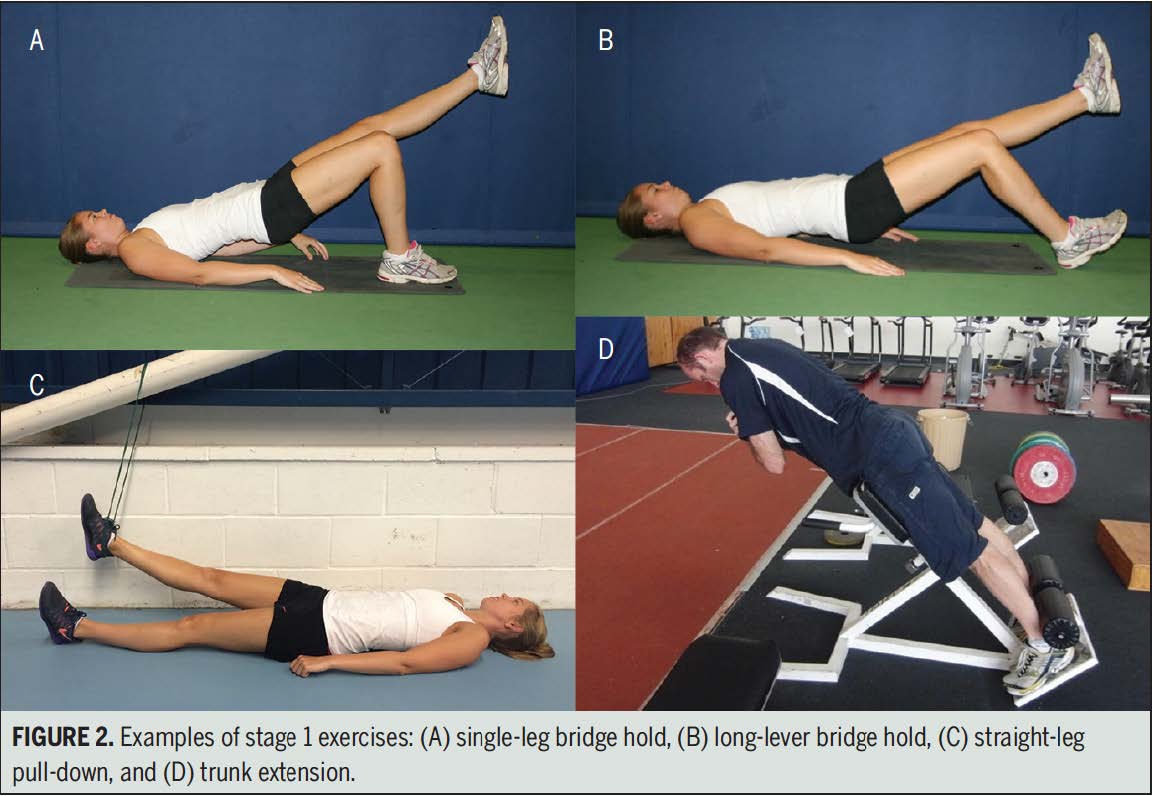Trail running calls to many runners for different reasons! It can be the quiet of the surroundings, the exploration of new places, the softness of the dirt, or the fun of never having to stop for a street light. Some runners are drawn to the trails because they feel it is “easier” on their bodies than the road. There is some truth to this in that runners tend to take shorter and more varied steps on trails, which does decease impact. Trails offer many benefits, but sometimes keeping in mind a few form tips keeps runners happy and healthy for the long run.
1) Pick up those feet!
One of the exciting features of trails is the many rocks and roots that speckle the trail. Our feet must be able to react to these changes. No matter the pace, being agile will decrease risk of falls and sprained ankles. Here are a few fun warmups!!!
Jump rope: 1 min intervals in place for 3-5 sets, focus on clearing the ground and pulling those knees up rapidly. The ropes rhythm forces a more elastic cadence with our feet!
Box jumps: these are great whether you have access to jump boxes at the gym or just use a curb or stair step. For 10-20 reps practice bounding with both feet clearing the ground, pulling knees up toward your chest, to land with feet entirely on the box or curb. START SMALL and try to repeat in smooth jumps on and off the step , work up to 30-45 seconds of bounding back and forth, 3-5 sets. Use step heights that feel easy and work your way up!
2) Running Uphill: Tall Lean for the Glutes!
Efficient form: LEANING FORWARD FROM THE ANKLES AND PUSHING “TALL” THROUGH THE GLUTES Running with a proper forward lean is having the body stacked in a straight line with a gentle lean from the ankles as they push off. This allows most of the weight of a runner to be positioned in front of their foot strike to allow ease with forward motion. A lean INTO a hill helps move the body forward with the least amount of work. YOU MUST BE SURE TO STRENGTHEN YOUR HIPS TO GET THE JOB DONE (maybe another article (: ****Self cue: practice squeezing your glute muscles (buttock muscles) with each leg during the “push” up the hill. This will straighten your hips up and forward to get you to the top. Also this will make you stronger with longer and steeper climbs!
3) Running downhill: Lean Into the Hill
Descending a hill or a long run downhill sounds easy, but many have experienced the sore quadriceps and high rates of knee pain with this kind of terrain. Downhill naturally involves more impact because the ground is sloped away from us, and we land with a more straightened knee. We can mitigate this impact with a subtle change of posture.
Poor form: LEANING AWAY FROM THE HILL AND “BRAKING” WITH YOUR HEELS It seems natural to lean back when you run downhill, but this will actually increase impact and risk for knee pain and heel pain.
Efficient form: SLIGHT LEAN FORWARD DOWNHILL AND CYCLING THE FEET IN QUICK SMALL STEPS. I tell people this usually will feel like a “plank” and your abdominals will automatically tighten with this technique. The lean will match the downhill profile, a small lean for gentle downhill and a greater one (considering your ability to stay in control and move your feet fast enough) with larger hills. Practice on easy downhills or road. This is also a great drill to improve foot turn-over in general. This will feel less stiff and therefore less impact on the knees.
***Self cue: place finger on your chest and slightly lean into it. Try to keep light pressure on your finger as you hold your downhill lean.
I hope these quick tips help! If you have any questions about this article or would like more information on running form, feel free to check out my Video Library page or email me at runnersmechanic@gmail.com.



